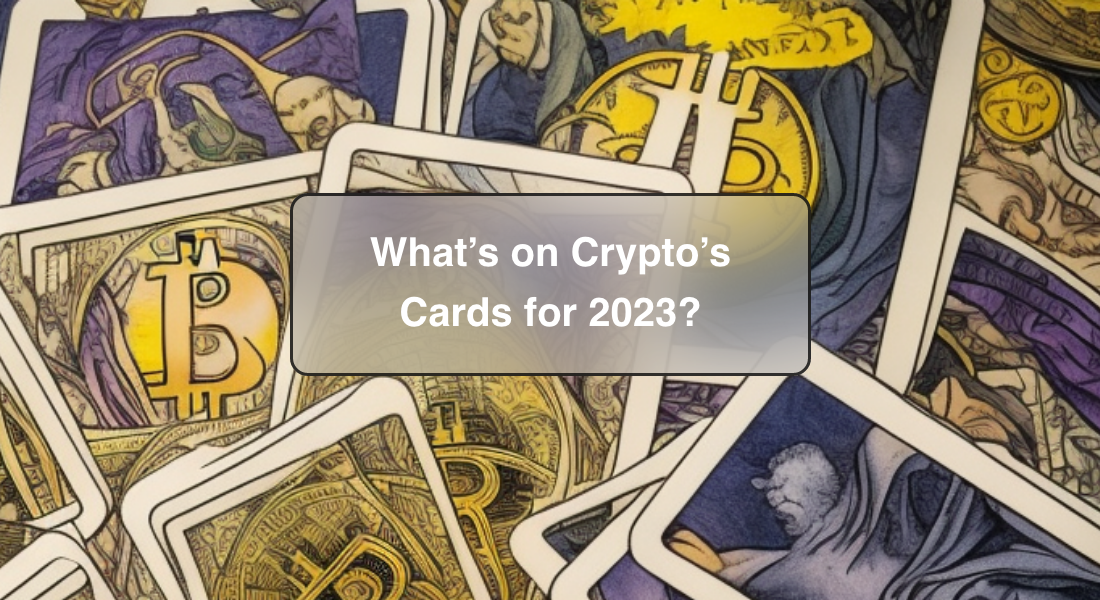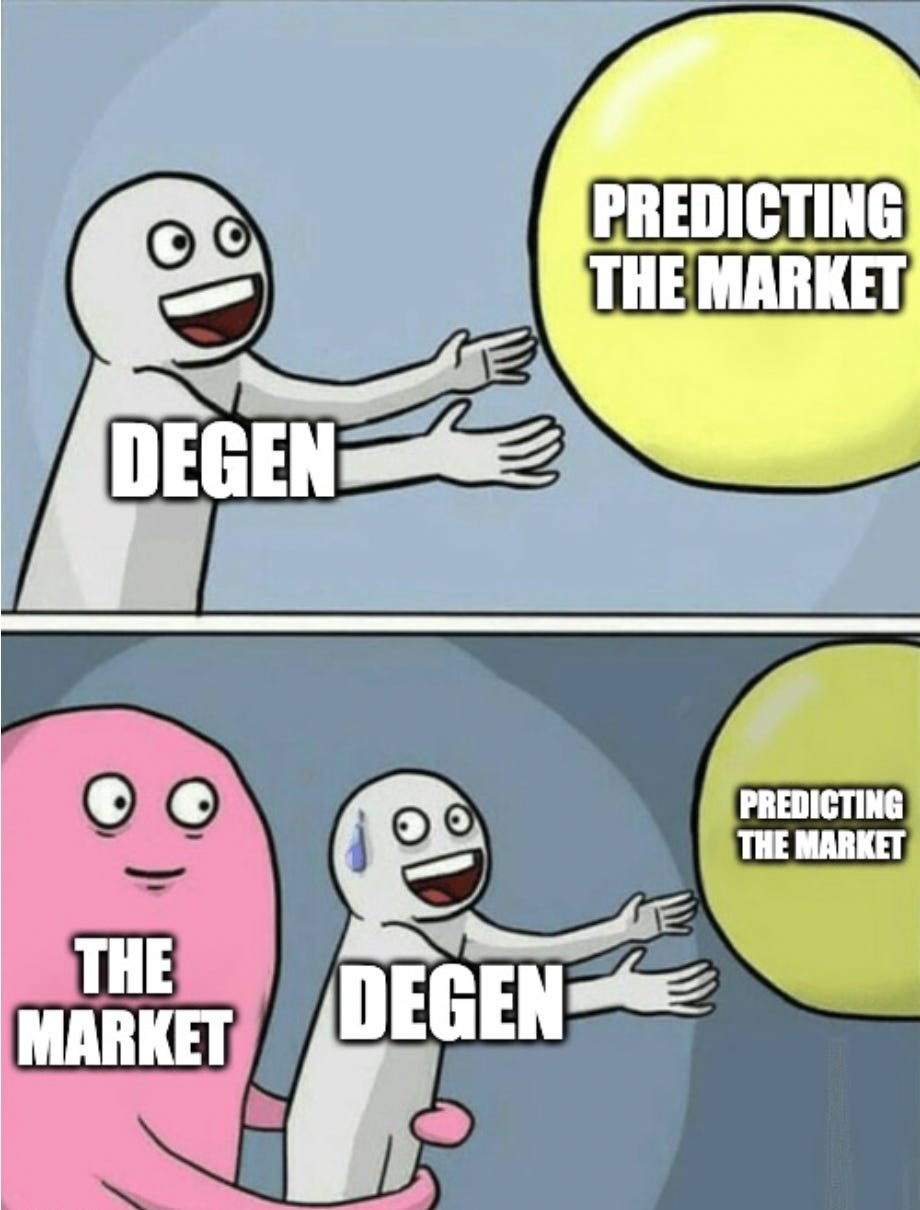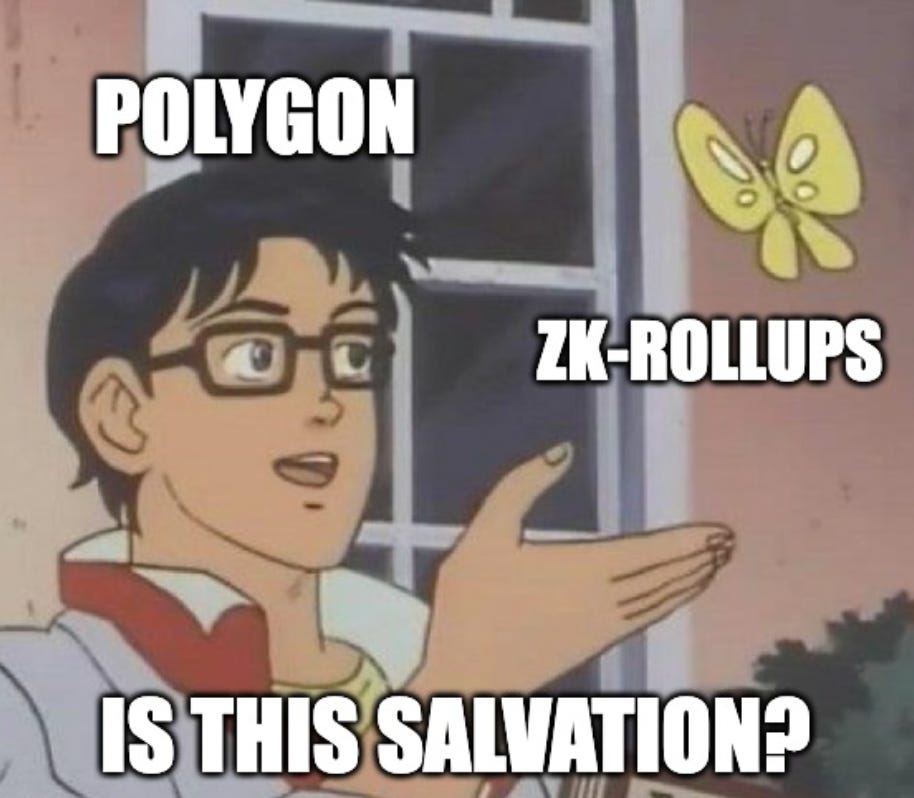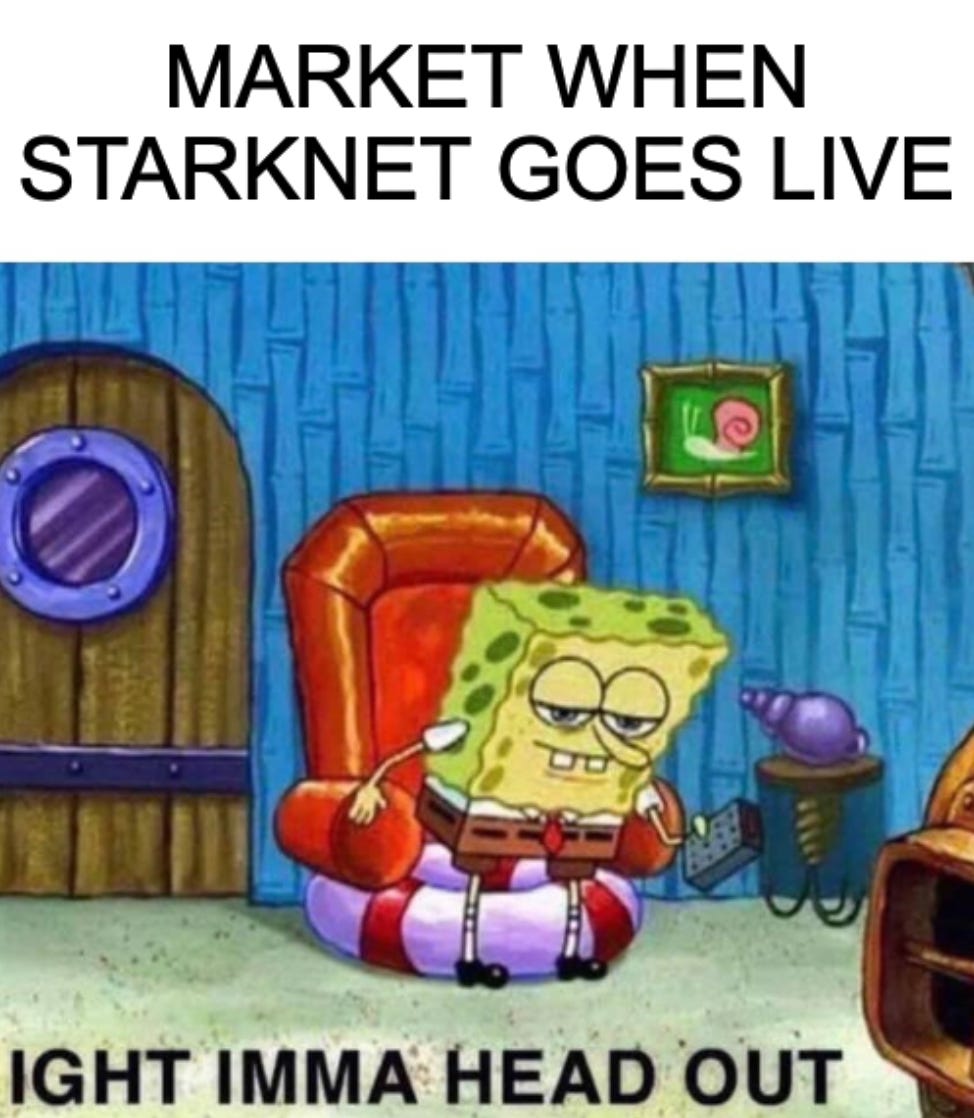What’s on Crypto’s Cards for 2023?
What is 2023 going to do with the heap of ragged degens and bloody port balances that it inherited from its predecessor?

2022 was a year of twists and turns. Sentiment bounced around harder than the $LUNA price chart.
Once again, proving that the only constant in crypto is change. But it’s phases of upheaval that shape the space and re-set its path.

So what is 2023 going to do with the heap of ragged degens and bloody port balances that it inherited from its predecessor?
Here’s my take…
#1 - NFTs are Dead, Long Live NFTs
Let’s start with the bad news: the JPEG market is crushed and will stay that way. It’s hard to see how a market built on an ever-expanding number of collections and copies will ever gain back enough traction to boost floor prices and get would-be buyers salivating again.
After all, art is valuable because it’s exclusive. Which points firmly to only the truly iconic collections ever retaining value over the long-term.
This will make way for more NFTs with special powers when it comes to DeFi products. Expect to see greater time and investment spent on developing NFT tech with function and added flexibility.
#2 - L2s Eye Number One Spot for Adoption
The number of new protocols choosing to be Layer 2-native will boom. With congestion issues and hefty gas fees still fresh in the minds of those who lived through DeFi summer, the need to branch out in terms of development is clear.
As the space enters the deepest bear market, builders will craft protocols with a focus on speed and usability from the earliest stages, which is where L2s will really find their feet.
There is a dual benefit at play here, which is only good news for blockchain. Freed from the constraints of mainnet, projects will be able to develop both linearly and laterally, enjoying a greater confidence to iterate, test, and execute new ideas if current solutions aren’t a fit.
#3 - Polygon Finds its Leading Edge

Polygon is building a significant market position and will take a lead in the L2 race. While competitors focus firmly on scaling their solutions, Polygon is approaching the market from a holistic perspective, incorporating privacy, scaling and homegrown talent.
On the surface, this prediction could be questionable. The project’s offering looks fragmented and that the core team is trying (and failing) to achieve too much. Polygon had its own network issues last year that haven’t been resolved; and competitors, like Arbitrum and Optimism, are running away with early traction.
Developing around zk-Rollups supports blockchain cornerstones which must be tackled, in privacy, scaling, and interoperability. Back this with a growing pool of talent from India venturing into crypto, and the opportunity to leave the rest of the pack behind looks odds-on.
#4 - GameFi Levels Up
GameFi will surpass 100 million active users. We will see a handful of playable (and enjoyable) top-tier GameFi reinvigorate the sector.
Following massive investment across 2020-2021, GameFi hasn’t managed to beat its final boss: launching something that makes effective use of blockchain while feeling like a premier title. Many projects currently have the pieces - game engines, design, broad team experience, tokenomics - but nothing has clicked yet.
But a sink-or-swim phase is approaching faster than Sonic the Hedgehog. The projects that raised cash from DeFi summer onwards have now had ample development time to start putting down a solid launch date. Not to mention, the looming prospect of dwindling runways.
#5 - So Long, Solana & Co
Stagnant L1s won’t make it through the crypto winter, with Solana, Polkadot, and Cardano first on the list.
Solana has been hit with one too many PR disasters, and its shaky performance issues haven’t ever been remotely convincing. Polkadot and Cardano are developing their way into obscurity, having failed to develop any new, significant traction from the last two years.
The market is at a juncture where it’s time to start pushing towards mainstream adoption. Builders will get increasingly ruthless with their choice of network and bet on the clear winner, meaning that most solutions will ladder up from Ethereum.
#6 - Stark Reality

A StarkNet token launch will see it leapfrog Optimism, and any Arbitrum launch. The much-hyped scaling solution has enough early support to quickly trump most of the market.
Despite giving followers little to cling on for hopium, the growth around it is only getting stronger despite this crypto lull. A vibrant network of wallets, DEXs, and stalwart DeFi solutions are quickly popping up. Many of these, like JediSwap, are community-led, providing a sound indicator into the kind of builders pushing development.
What’s still missing here is usability. Solve that and it’s game on.
#7 - Virtual Insanity
A global brand will nail its metaverse offering and kickstart a frenzied mini pamp. This will herald a fresh feel-good wave throughout crypto and finally begin to shake off talk of Goblin Town.
The truly bullish events, like a mainstream, regulated CeDeFi solution, feel far out on the horizon. The biggest opportunities currently lie in leveraging external value and development to amplify progress.
VR tech still feels clunky but, as a natural evolution in the gaming industry, its eventual maturity gives global brands time to finally understand the crypto space. 2023 will see the first glimmers of what a powerful trifecta in blockchain, brand awareness, and gaming tech can achieve.
// Jamie White